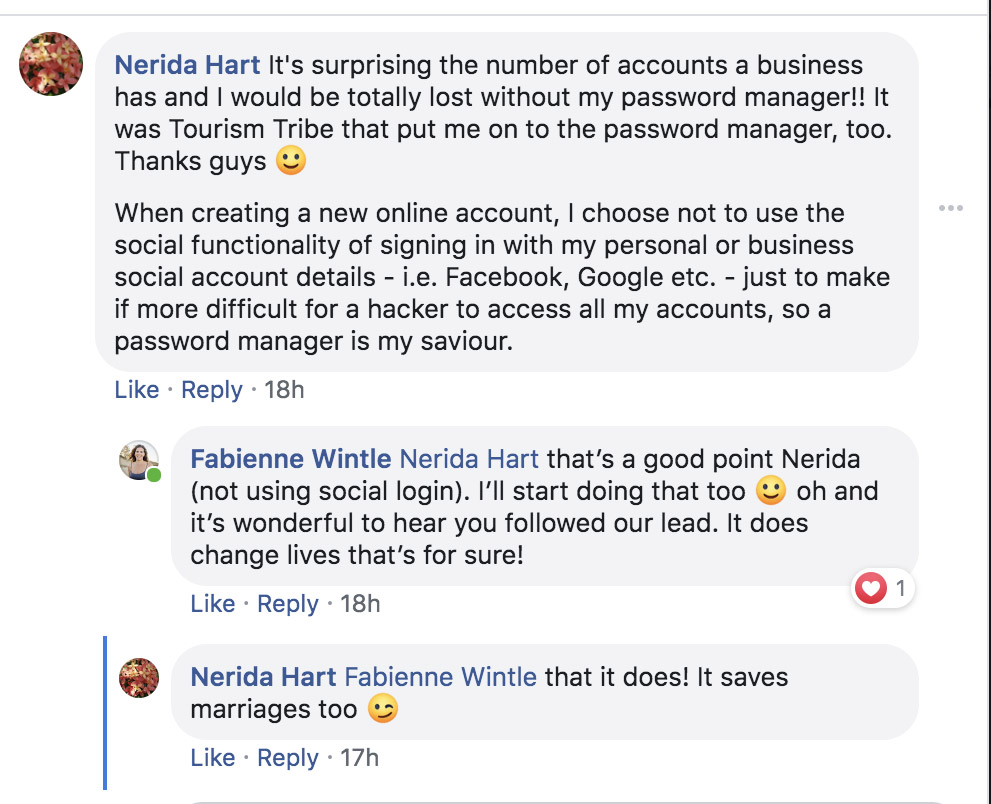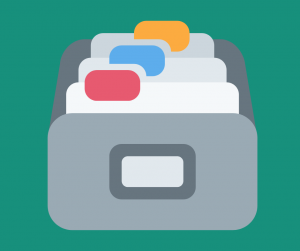
Visit Sunshine Coast SHINE Digital Transformation Program – Tourism Tribe Training
Shining a spotlight on tourism businesses committed to digital upskilling in an increasingly digitised world through our successful Tourism Tribe Training Program

There are many apps and online tools designed for personal and small business use that will improve productivity through time savings, improved customer experience, better team collaboration and project communications. Adopting these tools is something that people often procrastinate on because it seems easier in the moment to keep doing things the way you’ve always done them rather than pausing and taking the time to explore and learn a new method, app or software tool.
To get you started on your next stage of digital adoption we explain below our favourite seven digital tools that we rely on to connect with our team, customers and suppliers wherever they are and to improve processes in our business.

How many logins and passwords do you have? How much time do you spend each week resetting passwords because you can’t recall them? If you write your passwords down in a little book or a piece of paper, stop doing that now! You are making it too easy for this vital information to be lost or stolen.
There are legal firms now offering secure storage of documents with all of your important account, insurance, passport, logons, password details, so that should something happen to you, your accounts can be accessed and all of this other “life admin” information is easy to retrieve. But you don’t need to pay a solicitor to do this for you and these details change periodically so you have to be able to easily update them.
There are app-based tools, with heavy security encryption in them, where you can store all of these details. Our favourites are 1Password (Fabie’s used it for almost a decade!), LastPass, Dashlane. It doesn’t really matter which one you use, as long as you use a decent one. When I s started using 1Password on my phone and laptop (where now have over 400 logins and other valuable records), I calculated I’m saving at least 30 minutes per week in password retrieval and resetting and my passwords are much stronger.
Here are some arguments to change your mind:
And if you think that it’s safer to have your password in your little book of passwords/excel spreadsheet/google sheet/post-it – think again. What’s safe? something super encrypted or a file on your computer???

 We use Dropbox as our primary data storage platform and to ensure we use it efficiently we’ve implemented an organised, logical folder structure, some folders are shared with the team, some are just for the directors. We synchronise most folders to our computers and some folders, e.g. those holding large video files, we don’t synchronise so as not to cause all that data to be downloading to every team member’s computers unnecessarily.
We use Dropbox as our primary data storage platform and to ensure we use it efficiently we’ve implemented an organised, logical folder structure, some folders are shared with the team, some are just for the directors. We synchronise most folders to our computers and some folders, e.g. those holding large video files, we don’t synchronise so as not to cause all that data to be downloading to every team member’s computers unnecessarily.
With all of these files in Dropbox, it’s very easy to share files with clients and saves large email attachments.
Because Dropbox is on the cloud and we’re synchronising to our computers we can always access documents offline and online and negating the need for daily back-ups.
We operate separate single user accounts, typically with 1 Terabyte of data for each member of the team (costs around $120 (AUD) per annum per person) to store all of our documents and other data files.
Of course, it is advisable to separately backup very sensitive and valuable data that your business relies on and you might choose to back this up to an external hard drive that you keep with you or store away from your office in a safe location.
 Are you getting flooded with emails and is managing emails is taking up too much of your time? Are you sending emails back and forth between team members? There is a better way to manage intra-team communications about all sorts of topics and specific projects. We use the app Slack.
Are you getting flooded with emails and is managing emails is taking up too much of your time? Are you sending emails back and forth between team members? There is a better way to manage intra-team communications about all sorts of topics and specific projects. We use the app Slack.
Slack acts as a messaging system and knowledge base. We have created many “channels” in our team Slack account so we can always find prior conversations related to particular topics and projects, as opposed to trawling through emails or trying to remember if you texted someone about something.
It is our primary means of intra-team communications and allows for direct messaging, team discussions, links and attachments, notifications, all accessible on a computer as well as our phones. Having adopted Slack we are saving hundreds of emails per week…thank goodness!
 In our ongoing effort to reduce emails and wasted data storage, wherever possible we use Google docs, sheets and slides for creating documents where more than one person is involved in their development and review.
In our ongoing effort to reduce emails and wasted data storage, wherever possible we use Google docs, sheets and slides for creating documents where more than one person is involved in their development and review.
We have taught many of our clients how to use Google docs and once they’ve understood how dynamic it is, allowing more than one person to be working in the document at the same time and how it reduces emails with attachments, they are a convert!
We use Google docs when working on digital marketing strategies with clients, so the client can watch the strategy development, ask questions via comments in the document, be requested to action items, all in real time.
Once again a smart folder structure, setting up folders in Google Drive, is a good approach to ensure you are using this tool well and easily able to find the document assets you have created in the past.
Another great Google document tool not many people know about is Google forms. Create a form to collect info from your customers, take orders etc in no time at all. You’ll feel like a web developer, but it’s very easy.
 To quickly create quality graphics and social media posts check out Canva. This is our weapon of choice for our team to create smart images for Facebook cover images, social media posts, images for email marketing, even print jobs.
To quickly create quality graphics and social media posts check out Canva. This is our weapon of choice for our team to create smart images for Facebook cover images, social media posts, images for email marketing, even print jobs.
The templates provided make it very easy and the design possibilities for an amateur are endless. You can upload your own branding including logos and your own photos, or you can use free elements and graphics available on Canva or purchase stock graphics at $1.00 each.
They also offer the Canva photo editor, which is super easy to use and great for re-sizing images.
 We reduce risk in our business by avoiding manual data entry wherever possible and by passing data automatically between applications, we are saving time as well as avoiding unnecessary human error. Ultimately you are improving your customer experience by reducing process steps for them as well.
We reduce risk in our business by avoiding manual data entry wherever possible and by passing data automatically between applications, we are saving time as well as avoiding unnecessary human error. Ultimately you are improving your customer experience by reducing process steps for them as well.
The tool we use to automate tasks and data entry is Zapier. You create “zaps” between applications to automate what would otherwise be a manual process or a step for your customer to do. A good example is when someone signs up for one of our online training programs, when they complete the online form on our website, this automatically triggers a series of registrations in Zoom, our webinar platform and they will then be registered in that system and receive confirmations as if they’d registered themselves; and secondly, it adds them and the details of the course they’ve signed up for in our customer relationship management system, Insightly. If we were to do this manually we would need one full-time admin person. Can you imagine the time and cost savings Zapier offers us?
We use Zaps in all of our projects where appropriate to reduce the effort for our customers and our staff and to reduce the risk of data entry error, allowing our team to focus on the more interesting work they do.
All businesses can find tasks to automate and a simple example combining the digital tools mentioned above that we’ve helped clients to implement is when a customer completes a Google form for an order, that order information is automatically passed via a Zap to a Google sheet for internal actioning and directly into their accounts system to generate an invoice…presto! Half the work is done ?
 We spend a great deal of time helping businesses to improve their online presence and their marketing and most business owners are very keen to do that. Where the majority of small businesses are missing an important opportunity is in measuring the effectiveness of their marketing and using this intelligence to improve their online presence.
We spend a great deal of time helping businesses to improve their online presence and their marketing and most business owners are very keen to do that. Where the majority of small businesses are missing an important opportunity is in measuring the effectiveness of their marketing and using this intelligence to improve their online presence.
Google Analytics is a must-have tool and skill set in every business today if you want to invest in your marketing. Without it and without Google Analytics being set up properly you don’t know whether your website is performing for you and you know have the insights to know what to change in your marketing.
You can learn quite quickly the basis of Google Analytics and over time build your knowledge and confidence to do more advanced reporting and analysis.
Visit our Google Learning Hub or contact help@tourismtribe.com for specialised support and training in Google Analytics.
There are many more smart digital tools in the marketplace and alternatives to those discussed in this article. We’ve shared with you what we rate highly and a little about how we’re using them. Explore what will work for you and bring great efficiency, time and cost savings to your business and let us if you would like assistance with reviewing your marketing and processes and we can develop a digital plan for your business.[/vc_column_text][/vc_column][/vc_row]


Shining a spotlight on tourism businesses committed to digital upskilling in an increasingly digitised world through our successful Tourism Tribe Training Program

Discover the path to small business success through Tania’s inspiring journey at Yarraman Caravan Parks & Cabins and gain valuable insights from her expert advice.

In today’s digital world, the power of online accessibility is one of the most understated search engine optimisation (SEO) strategies, and here you will find